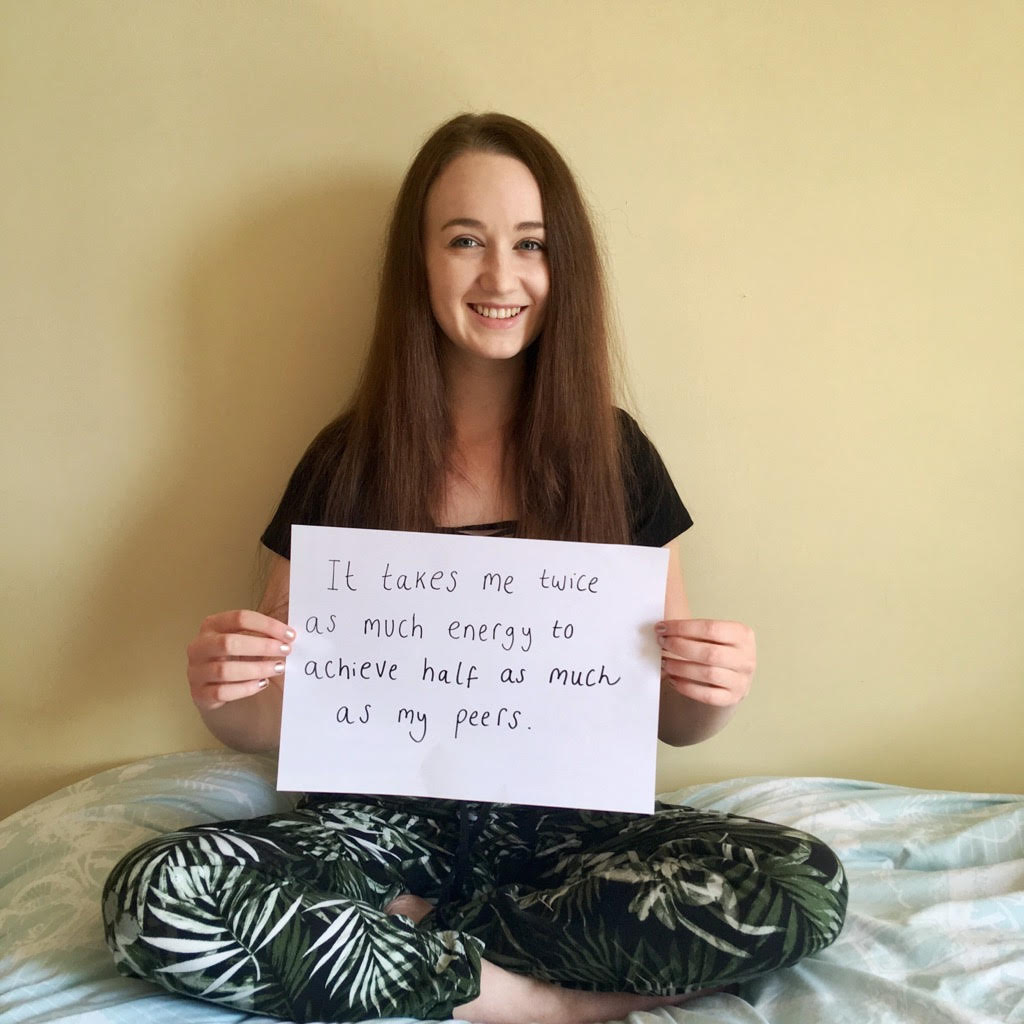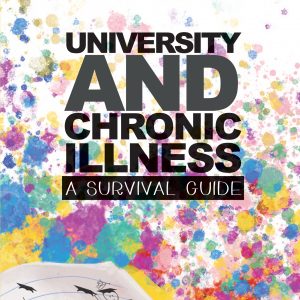
This piece was previously commissioned by UNITE Magazine (April 2019).
Society knows that people with invisible illnesses exist, but how much do they know about people’s experiences? If others can’t see people’s symptoms with their own eyes, how do they know that they’re there? Taking our word for it apparently isn’t enough, as has been illustrated with my own Blue Badge journey.
Having lived with a chronic, invisible illness since I was a teenager, it was during my early twenties that I really began struggling with my mobility. I’d be able to walk a short distance, but the ‘payback’ from that minor journey often meant that I’d spend the rest of the day hidden away in bed, suffering.
Since then, I’ve had three attempts at applying for a Blue Badge and been squarely rejected each and every time. It’s these experiences that have led me to believe that the Blue Badge assessment process simply isn’t fit for purpose for all invisibly ill people.
To an extent, I can understand why I would be rejected on the basis of an online application alone. My main condition, ME/CFS, is still widely misunderstood in the medical and social care field, and many professionals simply don’t realise the huge toll the condition has on your physical strength and nervous system. Although the online form questions how far you can walk, there’s no opportunity to explain the lasting impact that doing so can have on you. Decision makers want a quantitative number that can be ticked and compared on a form, not a qualitative human experience.

It was the physical assessments that were particularly eye-opening. I would perform certain actions, whilst an assessor observed. Can you hold your hand above your head? Can you look left to right? As somebody with moderate M.E that’s fortunately improved in recent years, my answer was yes, but I’ll struggle. But these application forms leave no room for elaboration: even as I explained that lifting my hand caused my heart rate to rocket and looking left to right made me feel dizzy and nauseous, I could see that my experience was being reduced to a simple tick in a box: yes, she can do these things. There would be no mention of the impact these actions would have.
It was the walking test that really solidified my suspicions though. I was asked to walk a short distance between two identified points in the room. The distance was manageable for me, but I knew the impact it would have perhaps wouldn’t be. I explained to the assessor beforehand that I can do this, but because of post-exertional malaise (one of the characteristic symptoms of M.E) it will leave me unwell tomorrow… would this be taken into account? Even as I asked the question, I knew it was futile.
So off I set, as they observed me with their clipboard. And by this point, I bitterly acknowledged what they would be looking for: outward signs of struggling. Perhaps a limp, or slow and sluggish movements, maybe even a cry of pain. And yet here I was: walking, albeit slowly, looking like any other young adult you’d see walking up and down the high street.

You wouldn’t see the crippling dizziness as the blood rushed from my head and pooled in my feet, you wouldn’t see my autonomic nervous system going into overdrive, you wouldn’t see my muscles cramping in protest or my brain being squeezed with invisible hands. You wouldn’t see any of those things as I calmly walked the desired length, and then returned to my seat.
The assessor listened as I explained what I’d experienced, but I could see it was meaningless. Again, I’d completed the task and earned another tick in a box that put a Blue Badge yet another step out of my reach. My explanations had been diluted down to a yes or no answer that somehow has the power to overrule my own word and lived experiences.
The assessor saw me complete a task that compromised my eligibility for a Blue Badge. What they didn’t see was me afterwards, struggling to ward off the payback long enough for me to get home safely. They didn’t see the next day, when my body screamed in complaint, confining me to my bed. How could a simple online form and yes/ no questions even touch on these experiences?
I wasn’t deemed worthy of a Blue Badge, and there’s no doubt that I’m not alone. Last year it was announced that the scheme would be extended to those with ‘hidden’ disabilities in 2019, and I hope in doing so, more thought is given to those currently being failed by the system. Our conditions may be visible, but we certainly aren’t. Listen to us: we need a fair and balanced assessment process so we can live the independent lives we deserve.
Can you relate? Please bear in mind that I’m not looking for tips or unsolicited advice in this area. I recognise that this comes from a well-meaning place, please respectfully refrain from this. However, do feel free to share your own thoughts in the comments, or on social media!






5 Responses
This breaks my heart but I completely understand. It’s one of the main reasons I didn’t want to apply for a blue badge because deep down, I knew it was futile and I would spend too much energy trying to get one and being rejected than it was worth!! Luckily, I have improved a lot and I don’t need one now but if I ever did in the future, I don’t know what I would do. I really do hope the application process adjusts as well, the stigma definitely needs to be broken!
Hi Pippa. I’m really sorry to hear of the situation you’re in with the Blue Badge system. I’ve just renewed mine for the first time, and on the application form I totally ignored some of the questions as they didn’t identify will ME at all. Instead I wrote how far I could walk, the fact that most days I couldn’t, and the fact that without a Blue Badge I could well be unable to shop as any energy I might have could be used just walking across the car park of the larger Supermarkets.
During the test for my initial application, I was to be taken out to the car park to do a walk test, but when I had to stop for breath and because of the pain before we left the building, the lady understood and my application was granted.
If they are to bring in a system that allows for Invisible Illnesses, it must be created, and the forms designed by people that know the illness well.
Bill, your correct. As it’s realised more of us have invisible disabilities and apply for help, web, paper questionnaires as well as people will require change but people having these disabilities like us, must be involved in their modification.
This article is so eye opening. The lack of education and awareness in regards to invisible illnesses is astounding. I know there are so many people going through this like you and I’m so happy you are bringing more awareness. I don’t have the courage to even try, I know I will be denied.
I totally get where you are coming from and almost feel fortunate that I received my blue badge when I had a diagnosis of cfs, my council where very understanding and even though i didn’t fit in the boxes she made it fit for me, hopefully with the addition of invisible illness’s from 31st august it will get easier, don’t give up xx